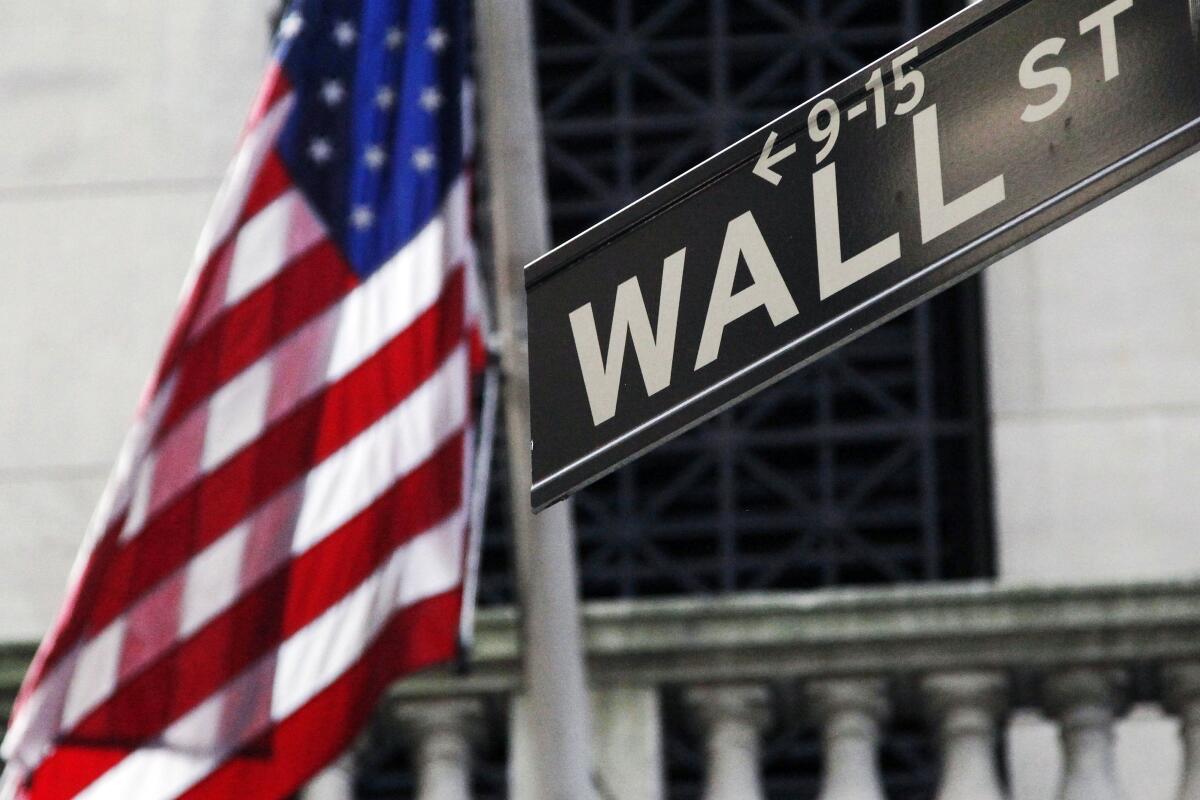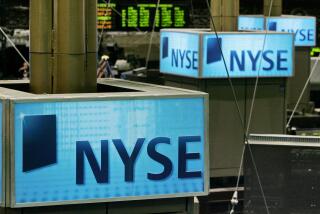A bumpy day for stocks leaves indexes mixed; yields ease

A choppy day on Wall Street ended with stocks mostly lower Friday, helping push the Standard & Poor’s 500 index to its second straight weekly loss.
Investors continued to watch the bond market, where Treasury yields slipped, as well as Washington, where Congress is expected to vote on President Biden’s stimulus package.
Losses in banks and healthcare stocks helped drag the S&P 500 down 0.5%, erasing an early gain. Falling oil prices weighed on energy stocks. Technology and communication services companies, which bore the brunt of the selling a day before, recovered slightly, which helped the tech-heavy Nasdaq composite manage a 0.6% gain.
Bond yields eased off of their multi-week climb. The yield on the 10-year U.S. Treasury fell to 1.42% from 1.51% late Thursday.
The S&P 500 index fell 18.19 points to 3,811.15. Despite a two-week slide, the index managed a 2.6% gain for February after a 1.1% loss in January.
The Dow Jones industrial average dropped 469.64 points, or 1.5%, to 30,932.37. The Nasdaq gained 72.91 points to 13,192.34, but still posted its biggest weekly loss since October. The Russell 2000 index of smaller companies eked out a small gain, adding 0.88 of a point, or less than 0.1%, to 2,201.05.
The indexes remain close to the all-time highs they set earlier this month.
A sell-off Thursday on Wall Street picked up speed when the yield on the 10-year U.S. Treasury note rose above 1.5%, a level not seen in more than a year and far above the 0.92% it was trading at only two months ago. That move raised the alarm that yields, and the interest rates they influence, will move higher from here.
The recent rise in bond yields reflects growing confidence that the economy is on the path to recovery, but also expectations that inflation is headed higher, which might prompt central banks eventually to raise interest rates to cool price increases. Rising yields can make stocks look less attractive relative to bonds, which is why every tick up in yields has corresponded with a tick down in stock prices.
Technology stocks have been affected more than the broader market by the rise in bond yields. Tech stocks tend to trade at higher valuations than the overall market. Investors are also betting that with vaccinations, the COVID-19 pandemic may be coming to an end, which would pivot consumer behavior away from online-only shopping.
In Washington, Democrats in Congress are preparing to move forward with President Biden’s $1.9-trillion stimulus package, with a vote in the House planned for Friday. The Senate could vote on the package as early as next week.
The stimulus bill would include yet another round of one-time payments to most Americans, including an expansion of other refundable tax credits such as the child tax credit, as well as additional aid to state and local governments to combat the pandemic.






